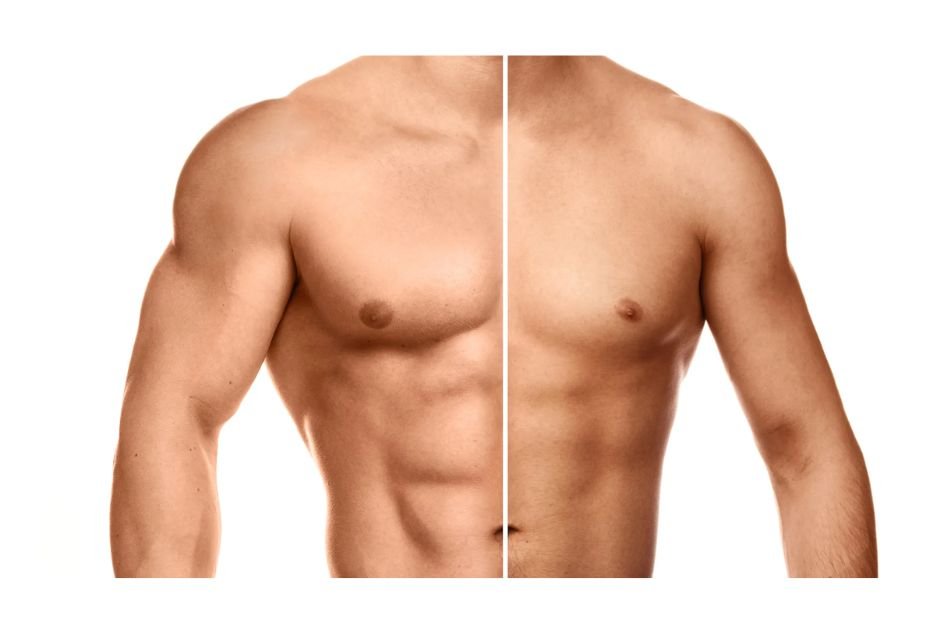Here’s an Overview of “What Is a Hypertrophy Workout” – An Art of Building Muscles
In the ever-evolving fitness industry, the phrase “hypertrophy workout” has garnered significant interest. Many gym goers often use the term hypertrophy workout, and many even think it’s just a catchphrase. But it’s a scientific method of gaining muscle that can completely change the way you approach a workout. Hence, if you’re curious to know what is a hypertrophy workout and how you can use hypertrophy to get amazing results, then this article is right for you.
Let’s explore in detail how hypertrophy development is valuable for increasing muscle mass, which in turn helps in other areas, such as athletic performance or sports.
What Is a Hypertrophy Workout?
Put simply, hypertrophy is usually referred to as muscle hypertrophy, where the muscle mass enlargement is caused by resistance training. A hypertrophy workout is focused on increasing muscle size and strength. It’s achieved using resistance training that includes moderate weight and high reps. Hypertrophy training is helpful in building muscle mass while burning fat and improving endurance.
In other words, a Hypertrophy workout is focused on increasing muscle fibers while developing large muscles of which you did the workout. Similarly, muscles can be from any part of the body, whether it’s calves, thighs, back, or biceps.
It’s a type of weight-lifting training that’s focused on building strong muscles while increasing the strength of the body. It’s also helpful to lower body fat. Hence, it’s often seen that muscular people have very little chance of gaining unnecessary body fat.
Hypertrophy workouts are specifically designed to stimulate muscles. The secret is to put your muscles under targeted stressors so that they will eventually grow and adapt. Similarly, targeted training, gradual overload, and knowledge of ideal rep ranges and rest intervals are all part of this process.
The Science of Hypertrophy Workout
Understanding the science of muscle growth is crucial to appreciating the efficacy of hypertrophy workouts. Resistance training causes our muscles to adapt to mechanical strain, metabolic stress, and muscular injury. Similarly, workouts that are aimed at hypertrophy take advantage of the below elements to establish an atmosphere that is favorable to muscular growth.
1) Mechanical Tension
This type of tension is produced in the muscles by resistance, usually with the use of weights. Exercises that require compound motion, such as bench presses, deadlifts, and squats, are great for creating mechanical tension.
2) Metabolic Stress
Exercises aimed at achieving hypertrophy frequently include methods that cause the muscles to accumulate more lactic acid and other metabolic waste products. The body responds to this metabolic stress by improving muscular size and endurance.
3) Muscle Damage
Resistance exercise causes microscopic damage to muscle fibers, which sets off the body’s healing mechanism and promotes muscle growth. One of the main components of a hypertrophy workout is controlled and targeted muscle damage.
#5 Essentials of a Hypertrophy Workout
Those who read till here we assume they now know what is a hypertrophy workout and the science behind it. Now, let’s break down the crucial elements of a hypertrophy workout:
1) Resistance Training
Resistance training, which involves lifting weights to challenge your muscles, is the cornerstone of a hypertrophy workout. Concentrate on compound workouts to optimize growth potential and train numerous muscular groups at once.
2) Repetition Range
Although there are different types of loading schemes, even for hypertrophy workouts, but eight to twelve repetitions per set are usually considered the optimal range. This range puts enough strain on the muscles without jeopardizing form or increasing the chance of damage.
3) Sets & Rest Periods
Hypertrophy requires performing many sets of each exercise, with sufficient rest intervals in between. To maximize muscular growth and recovery, it is considered ideal to aim for three to five sets of each exercise and give yourself sixty to ninety seconds of rest in between sets.
4) Progressive Overload
To maintain hypertrophy, your muscles must be continuously challenged by gradually increasing the resistance or intensity. This can be accomplished by raising the total intensity of the activity, adding weight gradually, or increasing the number of repetitions.
5) Exercise Variation
It’s best to make sure your workouts are varied to avoid plateaus and target different muscle areas. In addition, it’s recommended that isolation and compound exercises be combined to create a well-rounded hypertrophy workout program.
#7 Tips to Make Hypertrophy Workout More Effective
Below are five practical tips that will help you make your hypertrophy workout effective and achieve better and faster results:
1) The Secret Is Consistency
Building muscle takes time. It’s important to be consistent with your workout plan. For real results, try to do three or four hypertrophy workouts a week.
2) Put Form First
Give form more importance than lifting heavy weights. Maintaining proper form not only lowers the chance of injury but also guarantees that the targeted muscles are used efficiently.
3) Pay Attention to Your Body
Make sure you know how your body reacts to various workouts and modify your workout plan as necessary. If an activity is painful or uncomfortable for you, think about changing it or getting something else.
4) Recovery Days
Muscle growth and healing depend on getting enough sleep. Include rest days in your weekly schedule so that your muscles can heal and adjust to the strain of exercise.
5) Keep Your Body Hydrated
Although it is sometimes disregarded, proper hydration is essential for both muscular growth and recovery. Throughout the day, especially before, during, and after your workouts, sip lots of water.
6) Prioritize Compound Exercises
Those who have hypertrophy workout as a main goal they should prioritize compound exercises. For instance, exercises like squats and bench presses hit several muscle groups at once. Hence, it’s recommended that you go for such compound exercises as they have a better impact on your body and provide better results.
7) Progressive Overload Is Essential
If you think that adding more weight and repetition will give you the desired result, you should reconsider. Suddenly increasing weight, especially if you’re a beginner, will backfire. It’s recommended that you work with less weight and go for 4 to 10 reps.
#10 Benefits of Hypertrophy Workout
Those who read till here should be able to know what is a hypertrophy workout. Now, let’s find out what benefits it offers that you should consider doing your workout using the hypertrophy method.
1) Sculpt Your Dream Body
Hypertrophy exercises encourage muscle growth, allowing you to sculpt and form your body to meet your desired aesthetic appearance. Whether you want a toned back, a well-defined chest, or defined arms, hypertrophy training allows you to design the body you want.
2) Enhances Metabolism for Fat Loss
The influence of hypertrophy training on metabolism is one of its undiscovered benefits. Your resting metabolic rate rises when you gain lean muscle mass, which facilitates more effective calorie burning. It promotes fat loss and aids in maintaining a healthy weight.
3) Boosts Power and Strength
Hypertrophy exercises are closely related to an increase in strength. Your muscle’s capacity to produce force increases with muscle growth. This improved strength transfers into better daily activities and overall functional fitness in addition to improving workout performance.
4) Joint Health & Injury Prevention
Strengthening the connective tissues surrounding joints is a result of developing strong muscles. By increasing joint stability and lowering the chance of strains or sprains during physical activity, this additional support can help prevent injuries.
5) Increases Basal Metabolic Rate (BMR)
Workouts aimed at hypertrophy increase your BMR by increasing your muscle-to-fat ratio. It has long-term benefits for weight management and general health since it increases the amount of calories your body burns while at rest.
6) Enhances Bone Density
Resistance training is a crucial part of hypertrophy exercises to enhance bone density. As we age, this is especially helpful for preserving skeletal health and preventing osteoporosis.
7) Improves Cardiovascular Health
Although the main focus of hypertrophy exercises is resistance training, their intensity can also improve cardiovascular fitness. Along with promoting muscular growth, higher heart rate and increased blood flow have positive effects on the cardiovascular system.
8) Mood Booster & Stress Reduction
When you work out for hypertrophy, your body releases endorphins, which are naturally occurring mood enhancers. Frequent exercise has been demonstrated to improve general mental health by reducing stress, anxiety, and depressive symptoms.
9) Customizable & Adaptable Workouts
Hypertrophy exercises can be tailored to suit different tastes and fitness levels. Exercises using machines, free weights, or your own body weight can all be included in a routine that is tailored to your own requirements.
10) Support & Community
Taking up hypertrophy training frequently puts you in contact with like-minded people pursuing comparable fitness objectives. The companionship and support of other enthusiasts can foster a healthy and supportive exercise environment, which can be a potent motivation.
#10 Disadvantages of Hypertrophy Workout
Those who already know about hypertrophy for them, it’ll be strange if it has any disadvantages. Also, for those who are new to hypertrophy workouts, it’ll be something new to learn after knowing its advantages.
1) Possibility of Overtraining
Hypertrophy exercises should only be performed with adequate rest and recovery. Overtraining syndrome can lead to exhaustion, a decline in performance, and a higher chance of injury. To achieve the best outcomes, intensity, and recovery must be balanced.
2) Time-Consuming Workouts
Compared to other training techniques, hypertrophy workouts are more time-consuming because they frequently call for several sets, repetitions, and exercises. For those with hectic schedules, this could be a drawback as it can be challenging to commit to lengthier sessions regularly.
3) Unbalanced Muscle Growth
Unbalanced muscle growth might result from concentrating just on hypertrophy rather than taking a balanced approach to all muscle groups. In addition to impeding aesthetic goals, neglecting specific areas can lead to an unequal distribution of strength, which increases the risk of injuries.
4) Access to Gym Equipment
Barbells, dumbbells, and other gym equipment are necessary for a number of efficient hypertrophy workouts. For those who are restricted to or prefer at-home workouts, this could be a drawback because it could be challenging to replicate the same degree of resistance and diversity.
5) Possibility of Plateau
As the body adjusts to a hypertrophy exercise regimen over time, muscular growth may plateau. Constant variation and progressive overload are required to counter this, which can be difficult for novices or people who are not accustomed to periodization.
6) Danger of Ego Lifting
Ego lifting is the practice of forgoing good form in favor of greater resistance since it stems from the desire to lift larger weights and see results faster. It reduces the effectiveness of hypertrophy training and raises the danger of damage.
7) Hypertrophy Workouts Are Not for Everyone
People with specific medical issues or beginners with low levels of fitness may not be able to perform hypertrophy workouts at the intensity a lifter should be doing to gain maximum benefit. Similarly, it’s critical to adjust the intensity based on personal capacity to prevent undue physical stress.
8) Possibility of Joint Stress
A number of hypertrophy exercises, mainly compound motions involving large weights, have the potential to cause joint stress. This stress could cause discomfort in the joints or, in more severe situations, worsen long-term joint problems. Proper form and gradual advancement are crucial to reduce this risk.
9) Prioritize Aesthetics Over Function
Exercises geared toward hypertrophy frequently prioritize appearance over functional fitness. Achieving a well-defined body is a worthy objective, but functional strength and aesthetics must be balanced to support daily activities.
10) Not Perfect for All
Hypertrophy workouts might be less beneficial to people who have specific fitness goals, such as endurance athletes or people who are concerned with cardiovascular health. Customizing a training regimen to meet personal objectives is essential for overall fitness achievement.
#4 Common Mistakes to Avoid During Hypertrophy Workout
Building muscle is more than a one-day job. No matter how you train, whether it’s Hypertrophy or any other method, it’ll take time. However, with proper discipline, dedication, and consistency, it becomes easier to reach your goals.
Nonetheless, below are four common mistakes that lifters make that should be avoided when performing a hypertrophy workout.
1) Long Break Between Repetitions
Taking breaks for two to three minutes is something you would desire. However, taking breaks for longer periods won’t be effective for your workout. Similarly, for real results, try keeping your resting period maximum for two minutes, and you’ll see the difference.
2) Prioritize Both Free Weights & Resistance Machines
To gain muscle faster, you should use both resistance machines and free weights. Resistance machines are good for targeting muscles, and free weights are good for a hypertrophy workout routine. Hence, mixing both into your workout plan gives better results.
3) Get Involved in Conditioning Sessions
If you’re aiming to build muscle and skipping conditioning sessions, you might be missing out! Not doing proper conditioning before a hypertrophy workout can hinder your muscle gains. Consider incorporating exercises like prowler sprints, heavy sled drags, and farmer’s walks to help build those new muscles!
4) Follow Proper Workout When You Go to the Gym
Some believe you can focus on just one body part and ignore the rest, but the truth is different! It’s crucial to work on every body part during exercise. And it’s especially important in hypertrophy workouts. Hence, make sure you target all your body parts, including your legs, calves, upper body, and chest, for the best results!
4 Days a Week Hypertrophy Workout Plan
We hope you’re now clear about what is a hypertrophy workout and how it benefits you. Here, we’ve outlined one sample hypertrophy workout plan that you can try.
Day 1: Upper Push (Chest, Triceps & Shoulders)
| Exercise | Sets | Reps |
|---|---|---|
| Incline BB Bench Press | 3 -6 | 8 – 12 |
| Flat DB Chest Fly | 3 -6 | 8 – 12 |
| BB Military Press | 3 -6 | 8 – 12 |
| Cable Face Pulls | 3 -6 | 8 – 12 |
|
Front DB Lateral Raises Superset W/ Side DB Lateral Raises |
3 -6 | 8 – 12 |
Day 2: Legs
| Exercise | Sets | Reps |
|---|---|---|
| BB Back Squats | 3 -6 | 8 – 12 |
| Walking Lunges | 3 -6 | 8 – 12 |
| Leg Press | 3 -6 | 8 – 12 |
| Leg Extensions | 3 -6 | 8 – 12 |
Day 3: Upper Pull
| Exercise | Sets | Reps |
|---|---|---|
| Bent Over BB Rowing | 3 -6 | 8 – 12 |
| DB Biceps Curls | 3 -6 | 8 – 12 |
| Lat Pulldowns | 3 -6 | 8 – 12 |
| Rear Deltoid DB Fly | 3 -6 | 8 – 12 |
| Cable Biceps Curls | 3 -6 | 8 – 12 |
Day 4: Legs
| Exercise | Sets | Reps |
|---|---|---|
| BB Romanian Deadlift | 3 -6 | 8 – 12 |
| Bulgarian Split Squats | 3 -6 | 8 – 12 |
| Leg Curls | 3 -6 | 8 – 12 |
| Reverse Lunges | 3 -6 | 8 – 12 |
| Seated Calf Raises | 3 -6 | 8 – 12 |
Closing Thoughts
A hypertrophy workout is a method for gaining muscle and developing a sculpted body. It’s not just a trendy term in the fitness industry but a proper method for gaining muscle mass. Similarly, here, we’ve covered what is a hypertrophy workout in detail, including its benefits, common mistakes to avoid, and a sample workout plan.
Hence, by making a few small changes to your strategy and following this guide, we assure you that you’ll be able to start seeing results.
FAQs
Here below are some commonly asked questions regarding hypertrophy workouts.
1) Does Hypertrophy Workout Help Burn Body Fat?
Yes, a hypertrophy workout helps you lose weight by improving your RMR (Resting Metabolic Rate). Also, a hypertrophy workout is mainly for muscle building. Muscles burn more calories during resting time. In other words, hypertrophy helps you build muscles, which helps you lose body fat as well.
2) What’s the Difference Between Hypertrophy Workout & Strength Workout?
A hypertrophy workout increases muscle size and strength. A strength workout is completely focused on increasing strength, which helps increase one’s ability to lift heavier weights.
3) How to Activate Hypertrophy?
Implementing a workout with moderate repetitions, multiple sets, and moderate loads with short rest intervals will activate greater metabolic stress, which is essential for stimulating muscle hypertrophy.
4) How Do I Know I’m Doing Hypertrophy Correctly?
Some common signs that you’re doing hypertrophy correctly include improved muscular endurance, increased strength, and increased muscle size and shape.
5) Is Hypertrophy Good Or Not?
A hypertrophy workout is good. It helps grow muscles. However, it can become harmful if there are any underlying issues like the disease of cardiac muscle tissues.







